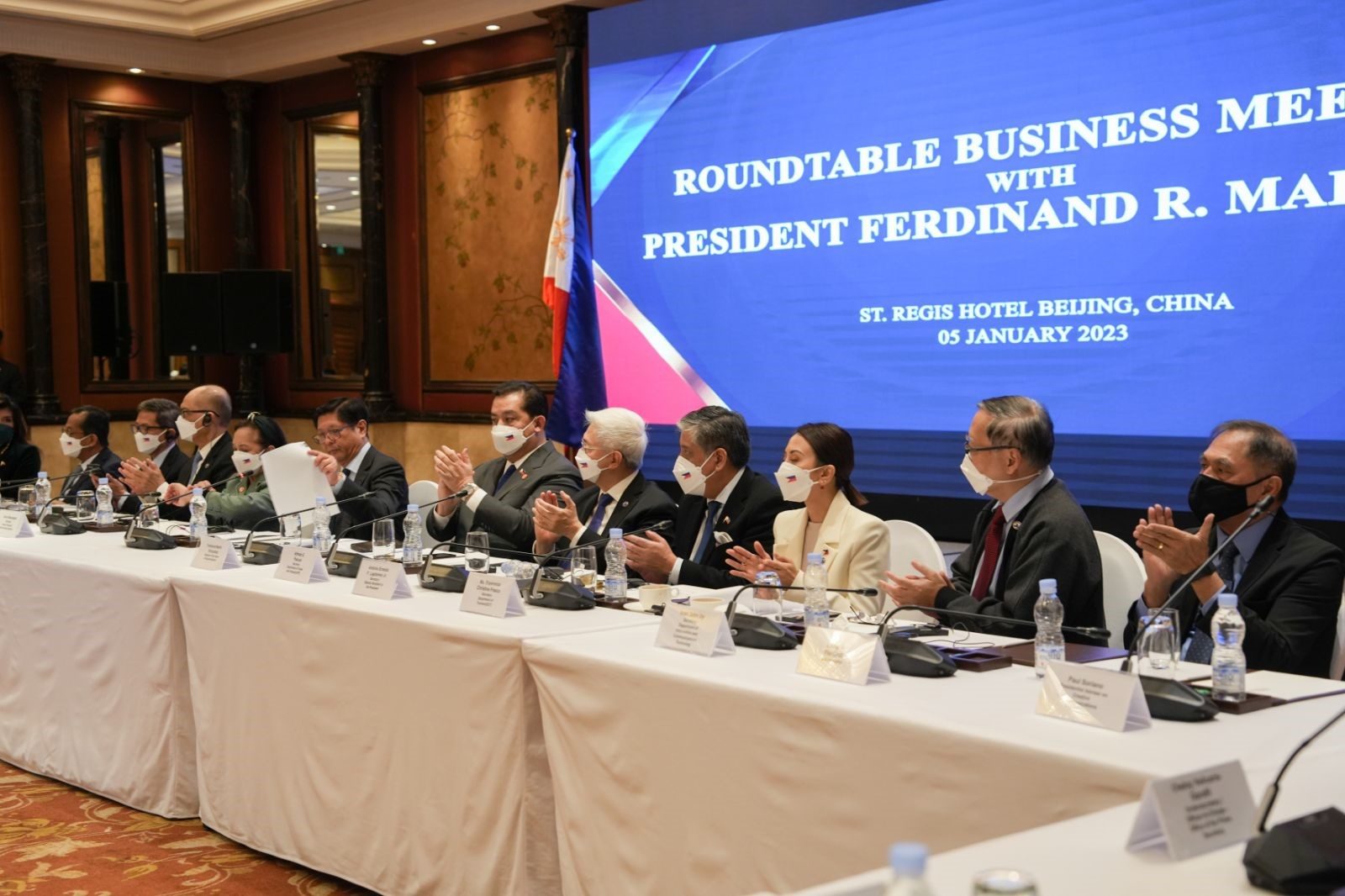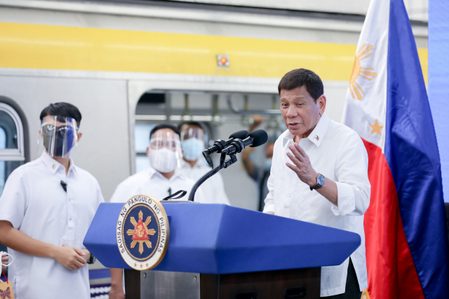SUMMARY
This is AI generated summarization, which may have errors. For context, always refer to the full article.

MANILA, Philippines– Nine Chinese energy companies have pledged to invest $13.76 billion or around P760 billion in the Marcos administration’s push for renewable energy (RE), as the Philippines braces for a tight power supply in the coming years.
In a briefing on Monday, January 9, Energy Secretary Raphael Lotilla said that these companies expressed their interest in the Philippine market during a roundtable meeting with President Ferdinand Marcos Jr. in Beijing last January 5.
The companies are:
China Energy International Group – it has had a presence in the Philippines for over two decades . In particular, it provides power generation, substation, transmission, cell sites, and fiber to home and data center projects in Northern Luzon.
China Power International Development (CPID) – a developer of solar, wind, hydroelectric, geothermal, and biomass power. Its portfolio also includes energy storage, hydrogen energy, green electric transportation, and integrated smart energy. The Department of Energy said that CPID intends to establish corporations with local entities to invest in these industries.
SPIC Guangxi Electric Power – a subsidiary of State Power Investment Corporation Limited. It has substations in Metro Manila, Calabarzon, and Eastern Visayas.
China Machinery Engineering Corporation – a subsidiary of China National Machinery Industry Corporation or SINOMACH, which is among the Fortune Global 500 companies.
China General Nuclear Power Group – the world’s third largest nuclear power producer and China’s largest nuclear power producer. It also has a total wind power capacity of over 35,000 megawatts and 10,000 megawatts worldwide for solar projects.
China Huadian Engineering – has renewable energy projects in Indonesia and Vietnam and is looking at expanding in the Philippines.
China Tianying, Inc. – A Chinese company engaged in smart urban services, resource recycling and recovery in renewable energy.
Dajin Heavy Industry – A publicly listed company since 2010. It is currently constructing a 300 megawatt offshore wind power project.
Mingyang Smart Energy – A renewable energy solution provider and wind turbine generator manufacturer. It has secured five turbine supply contracts for European developers.
The energy department has yet to specify the projects and where these will be located, but Lotilla noted that these will be mostly in solar and offshore wind projects.
“We are very pleased with the enthusiasm we have received from these Chinese companies during our roundtable meeting. They were upbeat with our policy reforms and directions on RE, especially on the opening of 100% foreign ownership on wind and solar projects,” Lotilla said.
The Philippines is aiming to increase its renewable energy share to 35% by 2030 and 50% by 2040. To meet these targets, an additional 52,000 megawatts of renewable energy will be needed by 2040.
Will China deliver this time?
This is not the first time that China and state-owned companies promised multi-billion investments for the Philippines.
Marcos’ predecessor, former president Rodrigo Duterte, was promised $24 billion or roughly P1.3 trillion worth of infrastructure projects and loans. This sparked years of speculation and fears that China has deployed some sort of debt-trap diplomacy amid a bitter territorial dispute in the West Philippine Sea.
Most of these pledges, however, fell through. Duterte’s economic managers scrambled to revise his list of big-ticket infrastructure projects and changed funding sources. Only two dams and two bridges from China materialized under Duterte.
Duterte’s economic team admitted that dealing with China was slower than anticipated, and that they were “extra careful” in dealing with Beijing.
International affairs analyst and De La Salle University Prof. Renato de Castro is not hopeful about the commitments that the president got from China. In an interview last Friday, he noted that “not a lot of the money” pledged during the Duterte administration “entered the country.”
But Socioeconomic Planning Secretary Arsenio Balisacan on Monday, January 9, said he is “quite optimistic” that these Chinese business deals will move faster under Marcos.
“[W]e are sending the signals. If they don’t move early on, we are also open to opening these areas to other players in the international community. We can’t obviously wait forever for their investment to come in,” Balisacan said in an ANC interview.
Philippine Chamber Chamber of Commerce and Industry director Sergio Ortiz-Luis said that most of these deals are unlikely to materialize, but noted that the pledges indicate high interest for investing in the Philippines.
“If even around 10% of those deals are fully realized, that is more than enough already,” he said in a recent Malacañang briefing. – Rappler.com
$1 = P55.11
1 comment
How does this make you feel?

![[OPINION] Alternative energy for a climate-challenged Philippines](https://www.rappler.com/tachyon/2022/09/Screen-Shot-2022-09-26-at-1.12.37-PM.png?fit=449%2C388)










Don’t be naive my friends.
That $13.76 billion investment pledge is part of China’s carrot and stick (a big one at that) strategy to have its cake and eat it too. I am normally an optimist but I will be a pessimist this time knowing full well how China has behaved in the past.
That pledge will materialize only to the extent the Philippines aligns with China on its core interests, especially its expansive claims in the South China Sea. I have a nagging suspicion that the previous administration saw little of the promised $24 billion investments because Duterte, who was initially warm towards China, had a change of heart towards the end of his term. The lesson is simple: displease China and the dollars dissipates.